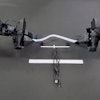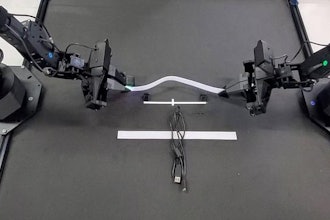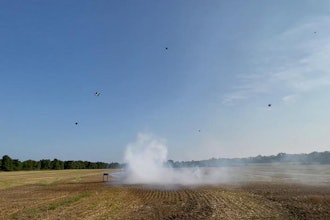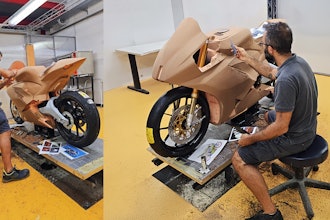Researchers from the Swiss Federal Institute of Technology (EPFL) and Humboldt University took a nearly 300 million year-old fossil and created a robot to mimic its ancient movements.
Experts believe that the Orabates pabsti first emerged about 350 million years ago, but it wasn't until the year 2000 that this particular fossil was dug up in a German quarry.
It's believed that this nearly three-foot-long creature evolved into modern birds, mammals and reptiles.
Researchers wanted to know how the ancient animal moved, so the team worked with records of ancient footprints and added motors, 3D-printed and steel parts to the fossils to create the OroBOT. Of course, they didn't use the real fossils, but replicas modeled after each bone.
Working off body movements inspired by a caiman, skink, iguana and salamander, the researchers tested multiple gaits that could match the footprints using four metrics: energy spend, ground reaction forces, matching the footprints and balance.
Because of the OroBOT, researchers now believe that the animal that once walked on Pangea used a more sophisticated gait. The work is part of an effort to gain a better understanding of extinct animals using evidence-based reconstructions.





















